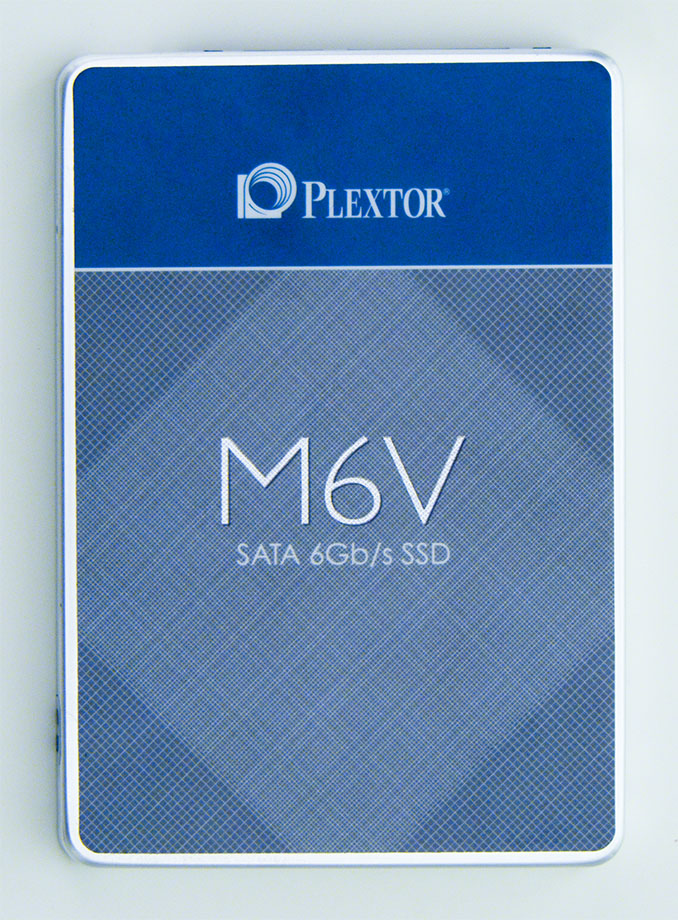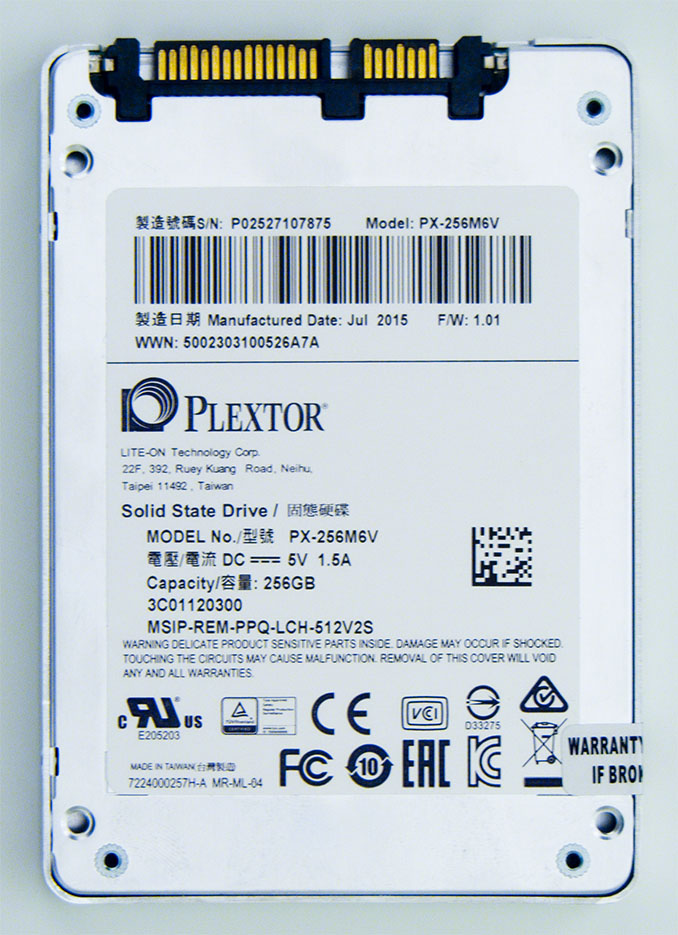The Plextor M6V (256GB) SSD Review
by Billy Tallis on October 12, 2015 8:00 AM ESTFinal Words
The value-oriented segment of the SSD market has a lot of great options at the moment for drives that don't have any critical weaknesses or major compromises relative to high-end SATA drives. This means that buying decisions will be driven almost entirely by the pricing of the moment. If priced properly, the Plextor M6V can be a great choice for general-purpose consumer use and especially for mobile use.
From a technical perspective, the most interesting aspect of the M6V is its Toshiba 15nm MLC NAND, as this is the only SM2246EN-based drive using it. Toshiba's 15nm MLC NAND seems to be a bit slower than the Micron 16nm MLC used in its closest relatives/competitors, but at the same time the M6V uses a bit less power. These differences are measurable, but probably not meaningful in the real world. The Plextor M6V and Crucial BX100 are about as close to interchangeable as drives can be without being clones that differ by only their label. The BX100's partial power loss protection may be important to some consumers but it's usually not a requirement in this market segment, and SM2246EN drives have not had any notable reliability issues.
| Amazon Price Comparison (10/12/2015) | ||||
| Drive | 120/128GB | 240/250/256GB | 500/512GB | 960GB/1TB |
| ADATA Premier SP610 | $49.99 | $84.99 | $223.44 | $379.99 |
| Transcend SSD 370 | $57.99 | $89.99 | $169.99 | $328.46 |
| Mushkin Reactor | - | - | - | $353.99 |
| Crucial BX100 | $61.99 | $79.99 | $159.99 | $314.99 |
| Plextor M6V | $65.99 | $99.99 | $189.99 | - |
| OCZ Trion 100 | $59.95 | $75.00 | $158.99 | $349.90 |
| Samsung 850 EVO | $64.00 | $89.24 | $168.63 | $343.24 |
Unfortunately, the current pricing on the Plextor M6V is simply too high in a crowded market. It's undercut by the Crucial BX100 and Samsung 850 EVO at every capacity point, and even the older SM2246EN drives using 20nm MLC are cheaper. Crucial and Samsung have the advantage of in-house NAND manufacturing, but the other competitors are just as much at the mercy of their NAND supplier as Plextor. In the long run the Toshiba 15nm MLC in the M6V ought to allow Plextor to beat ADATA and Transcend on price thanks to its greater density, but at these prices Toshiba and Plextor aren't there yet.
Ultimately if the high price is due to limited supply of the 15nm MLC, there may be significant price cuts further down the road as they get production ironed out. For now, although the M6V is as solid as any of the other SM2246EN drives, overall the BX100 remains the better value. Otherwise Plextor still has a hand to play in the market for smaller form factors; if the mSATA and M.2 variants of the M6V show up along with more reasonable pricing, they'll be very compelling for power-sensitive uses, as the BX100 is only available in the 2.5" form factor.












51 Comments
View All Comments
mczak - Monday, October 12, 2015 - link
I beg to differ. For 90% of all use cases, the performance difference of a pcie drive to a sata one will be minimal if not unnoticeable whereas the pcie one is a lot more expensive (for now - I don't see a technical reason for this, really). Whereas everybody probably agrees the performance difference from sata ssd to sata HD is definitely noticeable.Albeit this drive indeed doesn't really offer anything interesting. There's nothing wrong with that but that means it has to nearly exclusively compete based on price, which it currently does not.
svan1971 - Monday, October 12, 2015 - link
simply not true, having used an sm951 for 3 months now the performance increase over the 850 is absolutely noticeable from bootup to shutdown and everything in between.geniekid - Monday, October 12, 2015 - link
http://techreport.com/review/28446/samsung-sm951-p...According to techreport boot times are noticeably faster and general loading times are not.
JimmiG - Tuesday, October 13, 2015 - link
We're still just talking about a few seconds difference. Most people won't notice the difference between a boot time of 37 seconds and 33 seconds. What people will notice is the difference between *any* SSD and any regular HDD.Most consumers should just get the cheapest SSD at the highest capacity they can afford. The performance difference isn't enough to justify going with e.g. a higher-performance 250GB SSD over a slightly slower 500GB drive (which allows you to store more of your data on the SSD instead of your much slower HDD).
mapesdhs - Wednesday, October 14, 2015 - link
Irony is, right now the 850 EVO is also one of the best value SSDs available. Atm I wouldn't choose anything else for mainstream use.emn13 - Tuesday, October 13, 2015 - link
Even if this were true (which really depends on your workload - for common workloads it really isn't), that doesn't mean it'd be a good idea to pick between the extremely expensive PCIe solutions and the extremely slow HDD solutions - old fashioned SATA still commands the sweet spot.Perhaps not for much longer, of course :-).
Clauzii - Monday, October 12, 2015 - link
Also, try hotswapping a PCIe-card :)Billy Tallis - Monday, October 12, 2015 - link
M.2 doesn't support hotplug, but it's been part of PCIe forever and is supported by both the normal full size expansion card form factor and the U.2 connector. The problem is that consumer-class systems often don't bother to fully implement support for the feature, though obviously they support it on some level for the sake of ExpressCard and Thunderbolt.Ramalth - Wednesday, October 14, 2015 - link
Not taking in consideration that you cannot add or replace (most) laptops HDD with PCI-Express versions, so you have to use a SATA drive forcefully ...devione - Monday, October 12, 2015 - link
What's the point of having bicycles when there are cars?What's the point of having cars when there are airplanes?